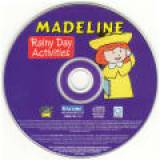How To: Draw Blood from a Human Vein
By Kinarion 1 Comments
Drawing blood from a human vein is pretty simple process. The blood in our veins isn't under a lot of pressure, at least not compared to the blood in our arteries, but it is being driven toward the heart forcefully enough to keep it flowing regularly. In effect, this means that that simply giving blood an "out" from a vein into the external environment is enough to get it flowing, though not very quickly. For our purposes, it'll be enough.
Everything you need to know as far as prep work is pretty much common sense derived from visiting a doctor or watching movies that prominently feature drugs. That's because heroin, for those unfamiliar with its use, is injected into veins by a process virtually identical to that with which blood is extracted from veins, save the actual injection. The basic things you need to know are the areas on the body with prominent veins, and methods for making veins "pop". Your best bet for easily accessed (and safely stuck, ie. no jugular) areas on the inside of the elbow, the antecubital area, and the top of the hand. From there, tie a tourniquet, most materials are fine, near and above your needle site. This causes the veins to pop up, but can ruin your blood sample and cause lots of pain if left on too long. Take it off in under a minute. Even if you can't find a vein in that time, just wait for the blood to flow out and retie your tourniquet.
Once you've found a vein, getting a needle into it isn't that hard. Keep the bevel oriented up, aim, and quickly insert your needle. Speed reduces pain, but shouldn't come at the expense of accuracy or cause you to over-shoot your target. Going through a vein with a needle isn't always problematic, generally you can withdraw the needle slightly and the blood flow will resume, but on smaller veins you may rupture the vein to such a degree that it isn't useful. You'll know you're in a vein when the resistance the needle decreases sharply.

1 Comments